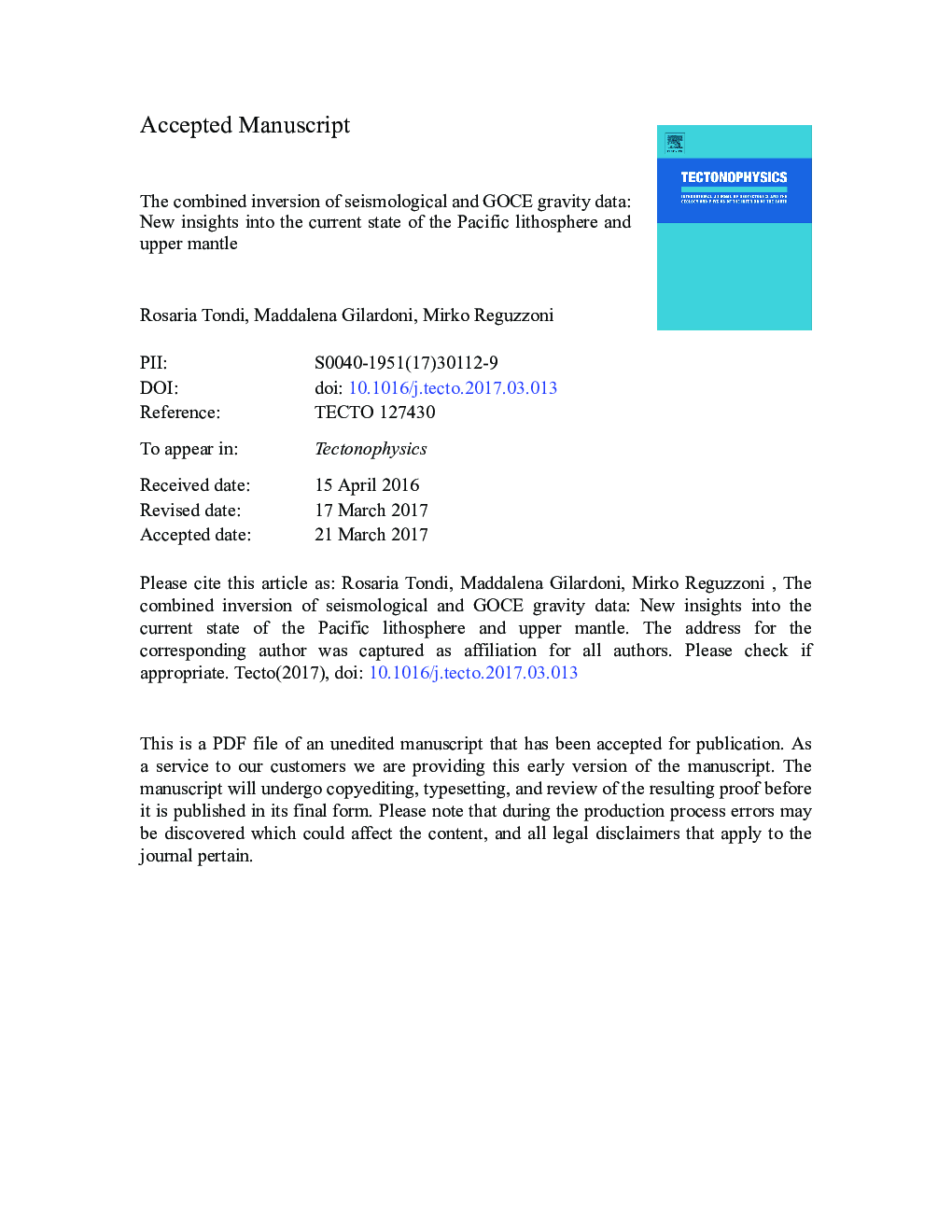| Article ID | Journal | Published Year | Pages | File Type |
|---|---|---|---|---|
| 5781631 | Tectonophysics | 2017 | 57 Pages |
Abstract
Our methodology enables us to combine the recovery of density parameters with the optimum density-vSV scalings. The latter account for both seismological and gravity observations in order to identify the regions characterized by chemically-induced density heterogeneities which add to the thermally-induced anomalies. Chemically-modified structures are found west of the East Pacific Rise (EPR) and are of relevant amplitude both below the north-western side of the Pacific Plate, at the base of the lithosphere, and up to 100 km depth beneath the Hawaiian and Super Swell regions, thus explaining the anomalous shallow regions without invoking the thermal buoyancy as the sole justification. Coherently with the chemically modified structures, our results a) support a lighter and more buoyant lithosphere than that predicted by the cooling models and b) are in favor of the hypothesized crustal underplating beneath the Hawaiian chain and beneath the volcanic units in the southern branch of the Super Swell region. The comparison between calculated mantle gravity residuals and residual topography a) suggests a lateral viscosity growth associated with the increasing thickness and density of the Plate and b) correlates well with sub-lithospheric mantle flow from the EPR towards west, up to the Kermadec and Tonga Trench in the south and the Kuril-Kamchatka Trench in the north.
Keywords
Related Topics
Physical Sciences and Engineering
Earth and Planetary Sciences
Earth-Surface Processes
Authors
Rosaria Tondi, Maddalena Gilardoni, Mirko Reguzzoni,
